|
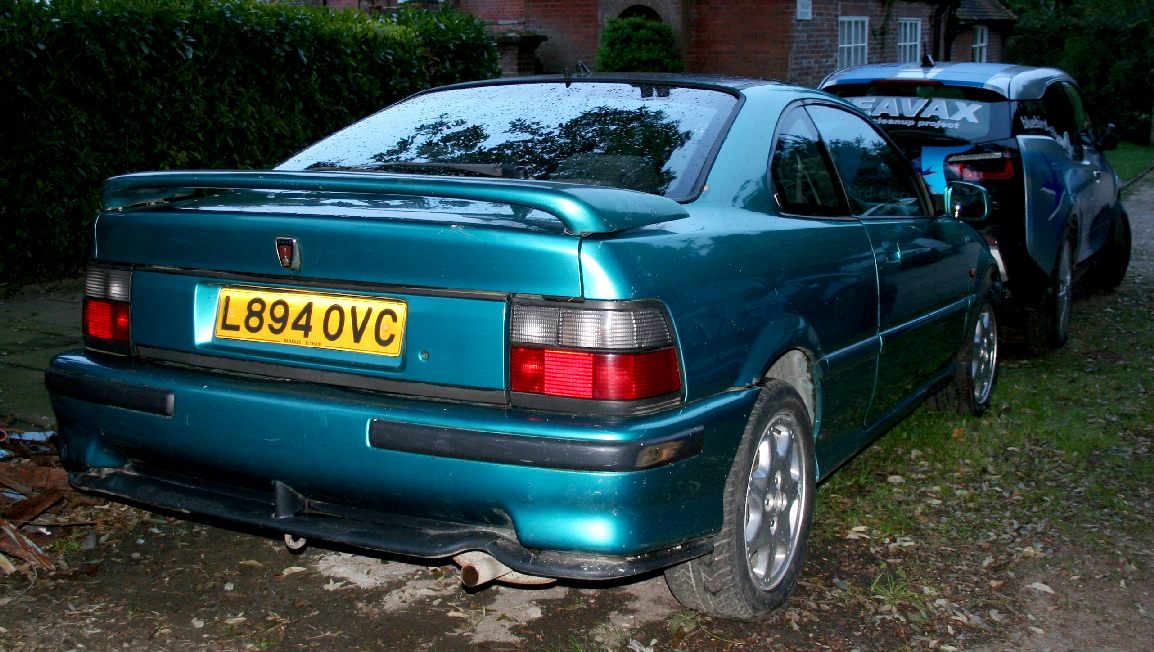
BARGAIN
PARTS FOR YOUR COLLECTORS CAR FOR SALE - From January 2018 this
car is being dismantled for parts. Pick up a New Year bargain for your
cherished classic and help to keep our motoring heritage alive.
|
PART |
DESCRIPTION |
PRICE |
AVAILABILITY |
|
... |
... |
... |
... |
|
Targa top roof |
Pair,
tinted glass left and right in good condition |
100 |
FOR
SALE |
|
Screens |
Set,
front, rear and rear quarter |
200 |
FOR
SALE |
|
Wheels |
Set
5 original 7 spoke 15" alloys with 4 good 185 VR tyres |
400 |
FOR
SALE |
|
Boot
& spoiler |
Original
in fair condition |
120 |
FOR
SALE |
|
Bonnet |
Original
with grille and badge in fair condition |
100 |
FOR
SALE |
|
Doors |
With
screens, wing mirrors and e winder, pair tatty |
200 |
FOR
SALE |
|
Front
wings |
Pair
in fair condition |
100 |
FOR
SALE |
|
Instruments |
In
good condition |
50 |
FOR
SALE |
|
Struts |
Front
suspension McPherson
pair in fair condition |
120 |
FOR
SALE |
|
Electronics |
Engine
management box in good condition |
100 |
FOR
SALE |
|
Inlet
manifold |
With
injectors In good working condition |
100 |
FOR
SALE |
|
Drive
shafts |
Pair
in good condition |
100 |
FOR
SALE |
|
Starter
motor |
In
good working condition |
75 |
FOR
SALE |
|
Alternator |
In
good working condition |
50 |
FOR
SALE |
|
Air
filter |
Box
and pipes to inlet manifold |
30 |
FOR
SALE |
|
Fuel
tank |
Fair
condition |
50 |
FOR
SALE |
|
Fuel
pump |
Fair
condition |
50 |
FOR
SALE |
|
Rear
swing arms |
Pair
with hubs and rubber bushes in fair condition |
150 |
FOR
SALE |
|
Engine |
Bare
block and cylinder head |
400 |
FOR
SALE |
|
Gearbox |
Without
drive shafts, in fair condition |
300 |
FOR
SALE |
|
Front
subframe |
In
fair condition with mounts |
250 |
FOR
SALE |
|
Indicators |
Front
pair in fair condition |
30 |
FOR
SALE |
|
Interior |
Tatty
but re-condition-able |
100 |
FOR
SALE |
|
Steering
wheel |
In
fair condition |
50 |
FOR
SALE |
|
Steering
column |
In
fair condition |
80 |
FOR
SALE |
|
Floor
pedals |
In
fair condition |
50 |
FOR
SALE |
The
Rover 200 Coupé was a two-door coupé produced by the Rover Group, based on the Rover 200 Mark II, with most of the body panels and the bumpers unique in the range. The car was launched on 6 October 1992 at the
Paris Motor Show. It was given the project code name 'Tomcat' when in development.
When introduced, the range flagship - the 220 Turbo Coupé - was the most powerful and fastest production Rover model ever built.
The range was revised in 1996 with new engines and was renamed Rover Coupé. Production ceased at the end of 1998.
The Rover 200 Coupé was equipped with a specially shaped split glass roof system with a central T-Bar. The twin panels could be tilted or detached independently, and the bar itself could also be removed and stored in the boot in a special protective cover. The glass was an advanced, semi-reflective material, coated with
titanium. Transmission of solar heat was restricted to only six per cent, eliminating the need for a sun blind.
The lines of the 200 Coupé resulted from a completely new monoside and front and rear roof panels, new front and rear bumpers and a deep front spoiler extension with large intake grille.
The interior was designed to accommodate four people, with rear seats individually styled. With the application of burr walnut veneer and quality fabrics, the interior was in the Rover traditions of elegance and refinement. Optional leather trim was also available. The Rover 200 Coupé featured infra-red remote central door locking as standard. It also saw the application of ultrasonic alarm system developed originally for the Rover 800 range, giving both perimetric and volumetric protection.
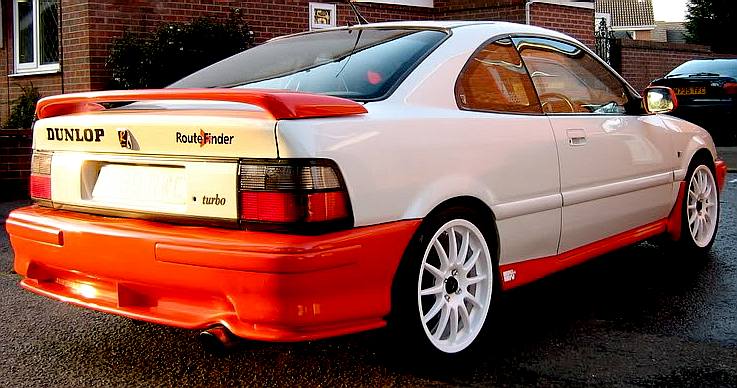
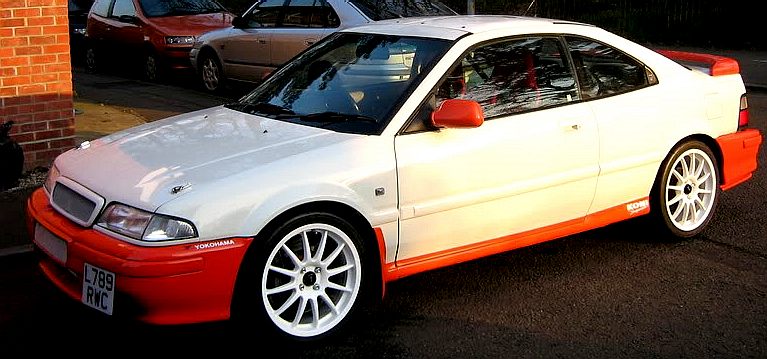
ROVER 200 COUPE 1992 - 1995
A specially developed version of the established 'Torsen' torque-sensing traction control system - previously only applied to four-wheel-drive and some rear-wheel-drive vehicles (Maserati Biturbo) - was developed to help optimise handling. It was standard on the 220 Turbo Coupé, and optional for the first year of production on the naturally aspirated 220 version. Critics at the time reported that the handling was marred by the power being rather clumsily transmitted through the front wheels. As a result the handling dynamics fell short of its rivals.
At launch, three engine types gave the Coupé a broad appeal: a Honda D-Series 1.6 litre engine 111 PS (82 kW; 109 bhp), and two Rover 2.0 T-Series engines; a naturally aspirated version producing 136 PS (100 kW; 134 bhp) and a turbo version 200 PS (147 kW; 197 bhp). All versions had manual transmission as standard, with an automatic option only with the 1.6 version.
In 1994 changes were introduced to the 200 Coupé range, most obviously with a chrome grille being added to bring in line with the rest of the 200 series. Cost saving changes were also seen, such as a reduction in the amount of leather used, ignition barrel light removed and dash light dimming deleted. The alarm system received several changes to keep up with current security requirements.
Ash Grey was the standard trim colour on all derivatives, but the optional full leather trim set could be specified in either Ash Grey or Sand Stone Beige. Exterior colours initially were: White Diamond, Flame Red, Black, Quicksilver Metallic, Nordic Blue Metallic, Polynesian Turquoise Metallic, Nightfire Red Pearlescent and Tahiti Blue Pearlescent (a new colour exclusive to the Coupé, later introduced to other cars in the Rover range). In 1994 Nordic Blue and Quicksilver were replaced with British Racing Green, Platinum Silver and Charcoal. Black, pearlescent or metallic paint were optional on all models.
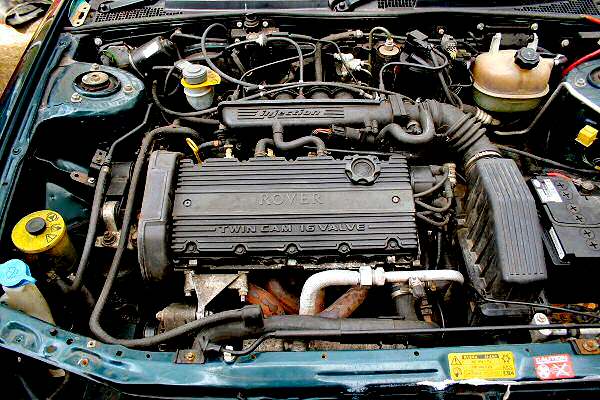
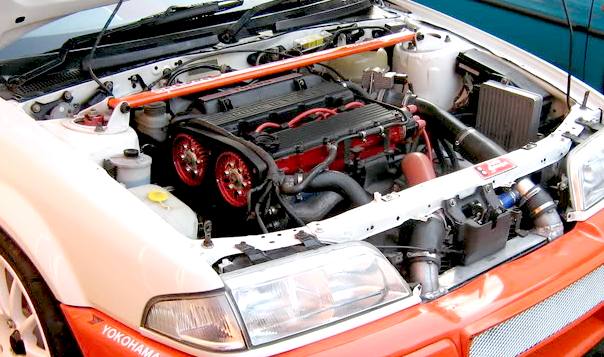
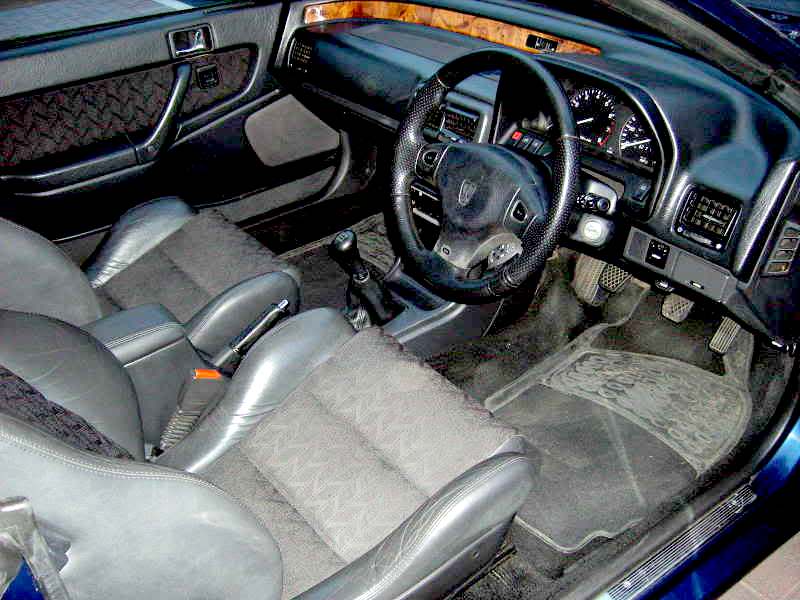
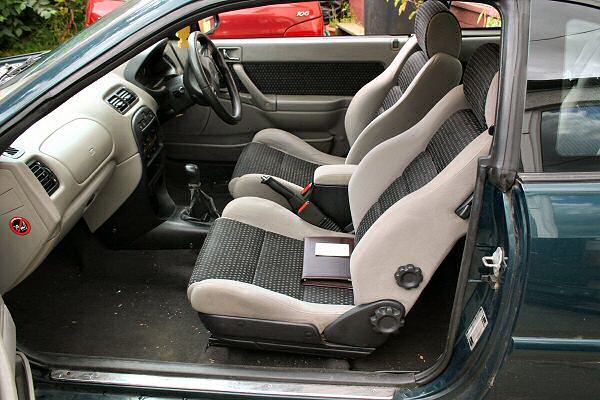
216 COUPE
The 1.6 litre model was designed to appeal to the cost conscious Coupé buyer. Priced at
£14,495, the 111 PS (82 kW; 109 bhp) version achieved a 0-60 mph time of 9.5 seconds and a maximum speed of 120 mph (193 km/h). Excessive stock of the 216 Coupé led Rover to bring out a new model, the 216 SE, prior to the new 1996 range was launched. This was dressed up with the rear body coloured spoiler and front fog lamps, aimed to generate additional sales to clear the way for the new models.
Positive centre feel power steering
Ventilated front disc brakes
15" 7 spoke alloy road wheels with 185/55 VR tyres
Locking wheel nuts
Intra-red remote central door locking
Comprehensive alarm system with engine immobilisation
Two-piece glass sunroof with T Bar
Sports style seats with lumbar adjustment for both front seats
Electronic 3-band stereo radio/cassette with four speakers
Roof mounted radio aerial
Electric front windows
50/50 split folding rear seat backrest
Height adjustable steering wheel
Tinted glass
Options included:
4 speed automatic transmission with torque lock-up
Anti-lock braking system (including rear disc braking)
ICE upgrade including 6 disc CD changer and RDS
Full leather trim set
Driver seat height adjustment
Air conditioning
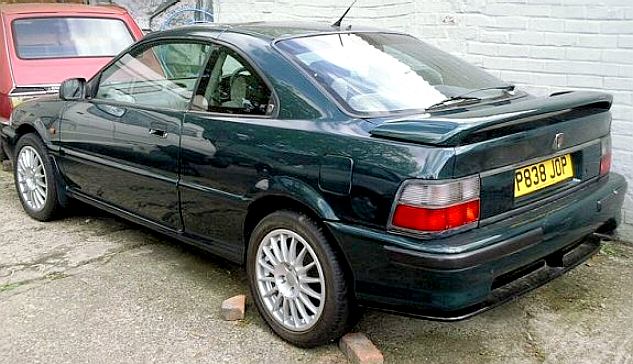
220 COUPE
This model featured the T series 2.0 litre 16 valve engine, later introduced into the rest of the 200/400 range in 1993. It replaced the M16 unit used in previous models. The 220 Coupé was priced at £16,670. In naturally aspirated form, the
16-valve T-Series produced 136 PS (100 kW; 134 bhp) at 6000 rpm and a top speed of 127 mph (204 km/h). 0-60 mph came up in 8.2 seconds.
Over the 216 Coupé, the 220 featured:
Rear disc brakes
Anti lock braking system
Front fog lamps
R750 RDS ICE
Leather seat borders
Boot mounted body coloured spoiler
Options included:
'TorSen' differential gearbox (deleted from option after first year of production)
ICE upgrade including 6 disc CD changer
Full leather trim set
Driver seat height adjustment
Air conditioning
220 COUPE TURBO
The flagship of the range, the 220 Coupé Turbo's performance came from the T-Series 2.0 litre 16-valve engine with turbo-charging producing 200 PS (147 kW; 197 bhp) at 6000 rpm and 174 lb·ft (236 N·m) The fastest-ever production
Rover achieved 149 mph (240 km/h) and a 0-60 mph time of only 6.3 seconds and 30-70 mph in 5.7 seconds in a 1992 Autocar test.
Torsen torque sensing traction control, uprated suspension and anti-lock brakes as standard. The differential is a completely mechanical device so by most manufacturer's standards this would not have been considered to be a 'Traction Control System'. However the LSD was the reason why the Rover was marketed as having traction control. Anti-lock braking (ABS) was standard on the 2.0 litre models. The car was priced at £18,315. Features of the Rover 220 Coupé Turbo over the naturally aspired 220 included:
Michelin Pilot tyres 195/55 on 15" 6-spoke 'Turbo' alloy road wheels
Leather trimmed steering wheel and gear knob
Turbo designation on rear appliqué panel
Options included:
ICE upgrade including 6 disc CD changer
Full leather trim set
Driver seat height adjustment
CFC free air conditioning
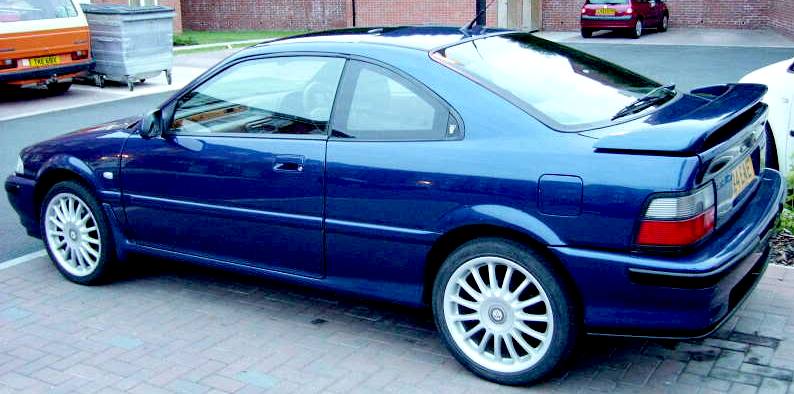
ROVER COUPE 1996 - 1998
In 1996 Rover announced revisions to the Coupé, with the range also losing the 200 model name. Two, all new, models were introduced to replace the previous models. The Coupé 1.6 was now fiited with Rover Group's own K-Series 16 valve double overhead camshaft power unit instead of the previous Honda unit. The 2.0 and Turbo models were replaced by the 1.8 VVC Coupe.
Inside, the interior was completely revamped and featured the new rounder dash as fitted to the newer shape Rover 200. The alarm system on all models was again changed and now featured Thatcham approval. The interior trim was lightened from the dark Ash Grey to a lighter Picadilly Grey. The 1.6 was fitted with cloth trim in either red or grey centres whilst the VVC came with the leather side bolsters as seen in previous models. All three models had the option of full smokestone leather. Exterior paint could be specified in seven colours, including one all new colour: Flame Red,
Charcoal, Platinum, British
Racing Green, Tahiti Blue, Nightfire Red and Amaranth. Near the end of production,
Diamond White again became available and another new colour, Anthracite was also available, although this is exceptionally rare.
At the end of 1998, Rover Group ceased production of the Coupé, bringing the R8 range to an end. The Rover Coupé body shape was never revamped to bring into line with the new shape 200 and 400.
COUPE 1.6
The SE model ensured it continued into the new range and again featured a body coloured rear spoiler and front fog lamps over the standard 216 Coupé. The K-Series 1.6 litre engine produced the same 111 PS (82 kW; 109 bhp) as the previous Honda engine and could reach the same speed. The automatic transmission was again available for the 216 and 216 SE Coupé models only. The 1.6 was fitted with
steel wheels with plastic trims or could be specified with a cost option 6-spoke 'turbo'
alloy wheels. The SE came with an all new 5-spoke alloy wheels.
COUPE 1.8 VVC
Launched to replace the 220 and Turbo, the VVC Coupé used Rover Group's K-Series engine with the addition of variable valve control as used in MG F. The VVC produced 145 PS (107 kW; 143 bhp), reached 131 mph (211 km/h) and a 0-60 mph time of 7.8 seconds, significantly slower than the previous Turbo model.
EXPORTS
The 200 Coupé was sold throughout Europe, Japan and even in
New
Zealand. The 216 Coupé sold outside the UK home market came fitted with double over head camshaft
Honda power unit, rather than the single over head camshaft unit fitted to the UK cars.
A batch of approximately 330 220 Coupé Turbo models were exported to Japan in 1995. There are many stories surrounding these vehicles, but the facts below are thought to be true:
The batch of vehicles left the UK, bound for Newmill, Keith. The vehicles were specified with all the optional extra, such as the full leather trim set and
air conditioning. They were built to Japanese regulations so featured
kilometre per hour clocks, a flare in the passenger foot well, and wheel arch extension trims. Emissions regulations changed whilst these vehicles were in transit and the cars could not be sold without alterations so they returned to the UK. It is not known for sure if they returned immediately as there was a three-year gap from leaving to them appearing again.
However, once back in the UK, Rover Group were left with few options. The new range of 200 Coupé models had been introduced, so these were now obsolete. Cost to ship back to Japan would have meant massive losses so the cars were converted back to UK specification and all registered in August 1998 by the Rover group. The cars had to be treated as being imported so the cars could not be sold on for a further six months due to importing laws. Rover then finally sold the cars off cheap to staff and selected car dealerships. A number of the vehicles are N plate registered with the last three letters as FDH, however, some were registered with different last three letters. A lot of FDH models are sold with misleading information, such as, more power than a normal UK 220 Coupe Turbo which is not the case.
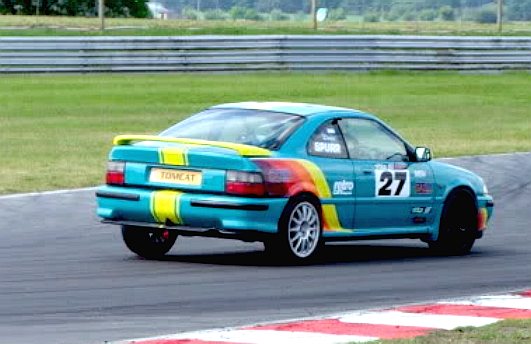
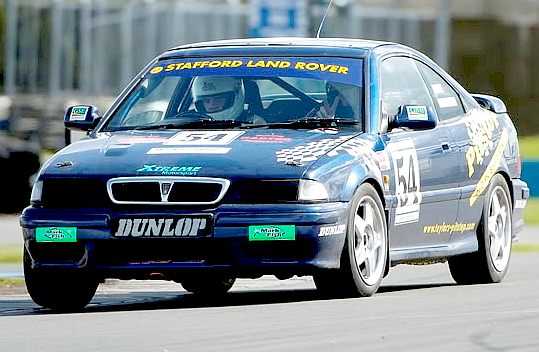
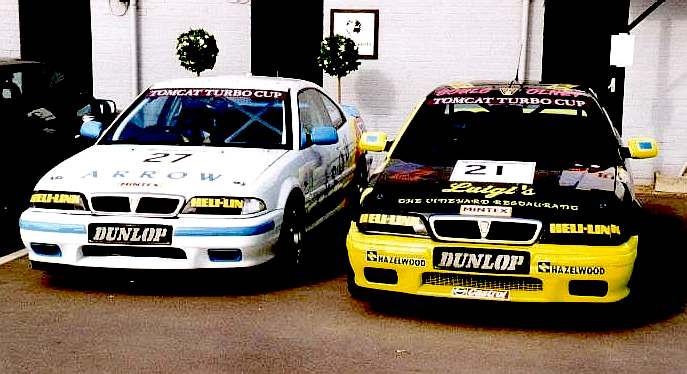
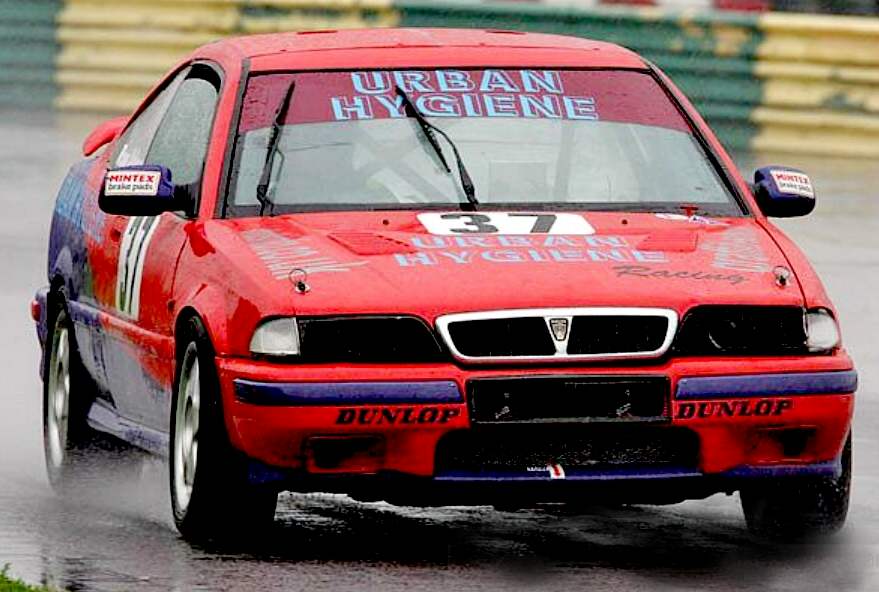
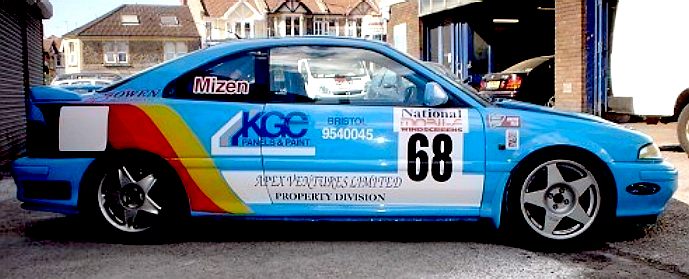
ROVER 200 COUPE RACING SERIES
In 1993, Rover Group produced 36 specifically modified 200 Coupé Turbo models. The cars were not undersealed and were seam
welded and fully race prepared. The code name
Tomcat from the project days was used to create a new race series, the
Dunlop Rover Tomcat Race Series. The cars competed against each other around the UK and
Europe for two years until
Rover dropped their backing. The series was renamed the Stafford
Landrover Super Coupé Cup and the cars continued to battle it out against each other. Many of the cars are still in existence and some still compete competitively against similar cars that have fallen fate of the end of single make series
racing.
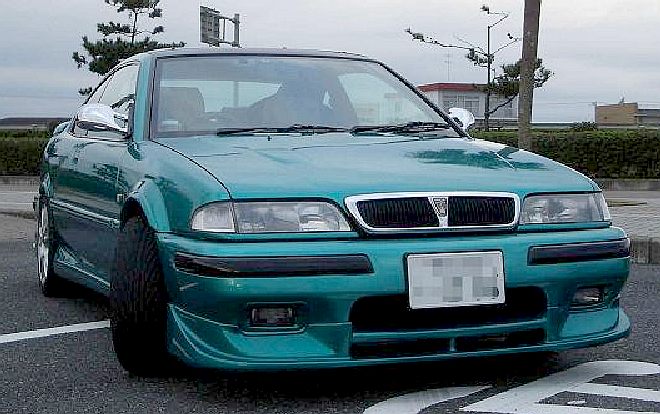
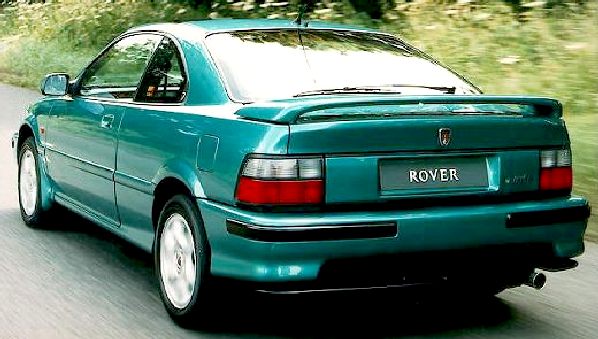
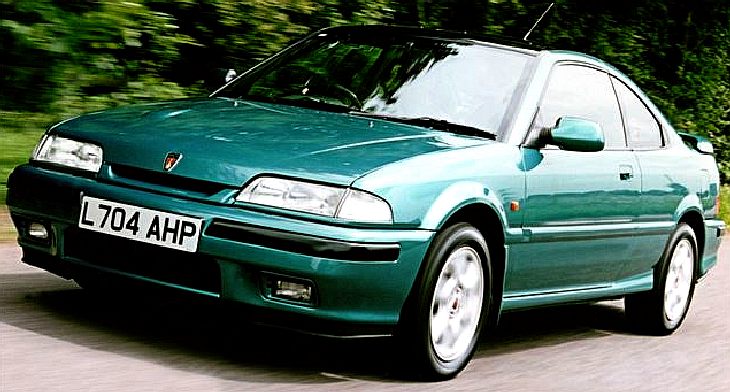
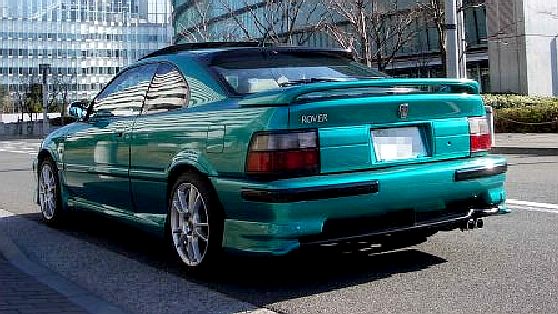
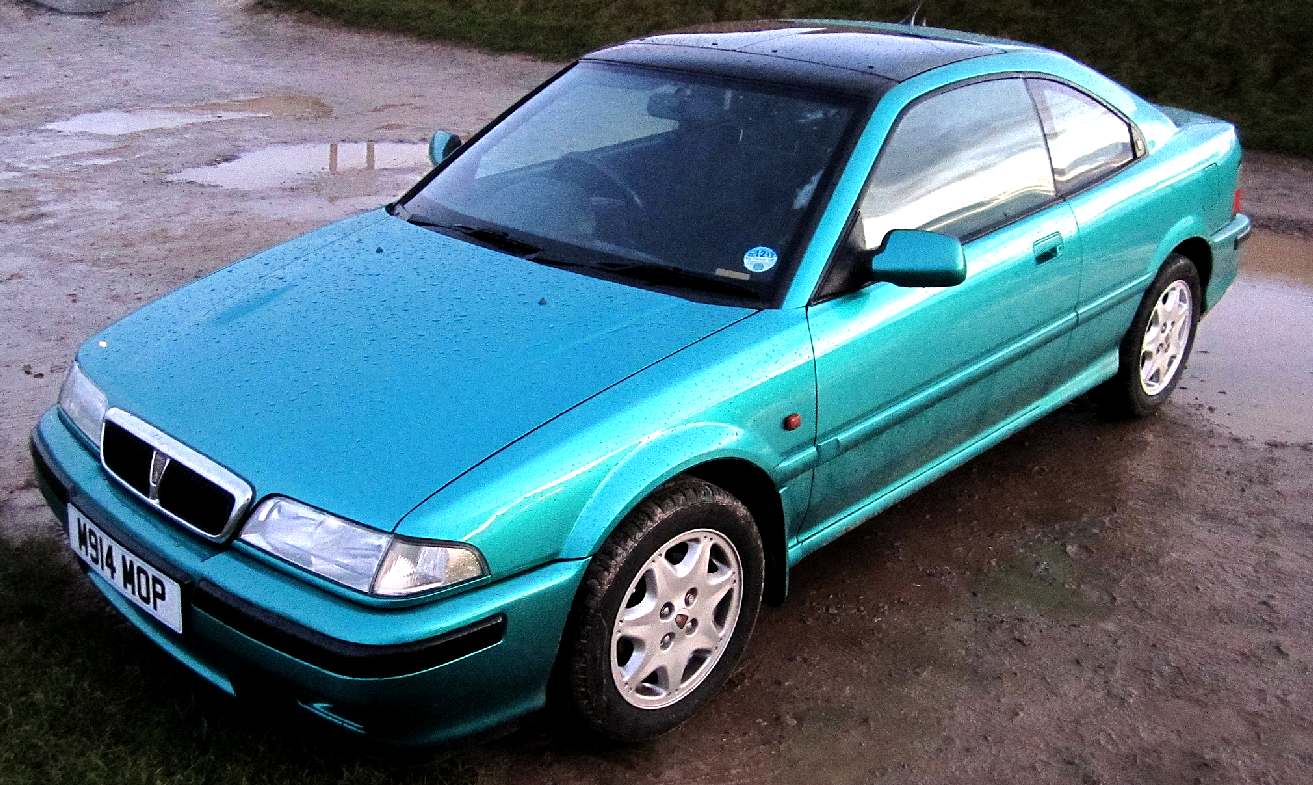
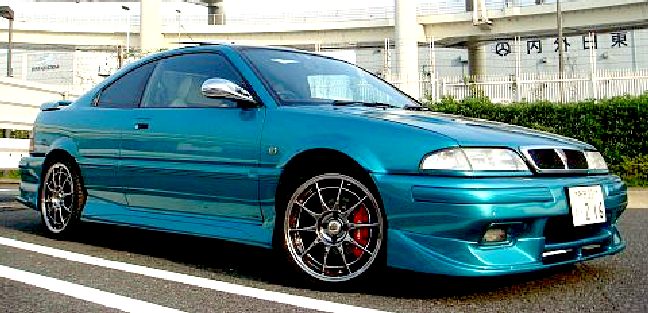
POLYNESIAN
TURQUOISE - Here are some shots of the Rover 216 in the much
coveted shade of turquoise,
some of which have been pimped with body kits.
LINKS:
http://www.rover200.org.uk/forums/viewtopic.php?f=6&t=3049
http://www.rover200.org.uk/
http://www.rover-coupe.com/
http://en.wikipedia.org/wiki/Rover_200_Coup%C3%A9
Please
click on the links above to find out about these famous automotive
makers. If your company is not included and you would like to be
listed, please let us know.
CONTACTS
A
taste for adventure
capitalists
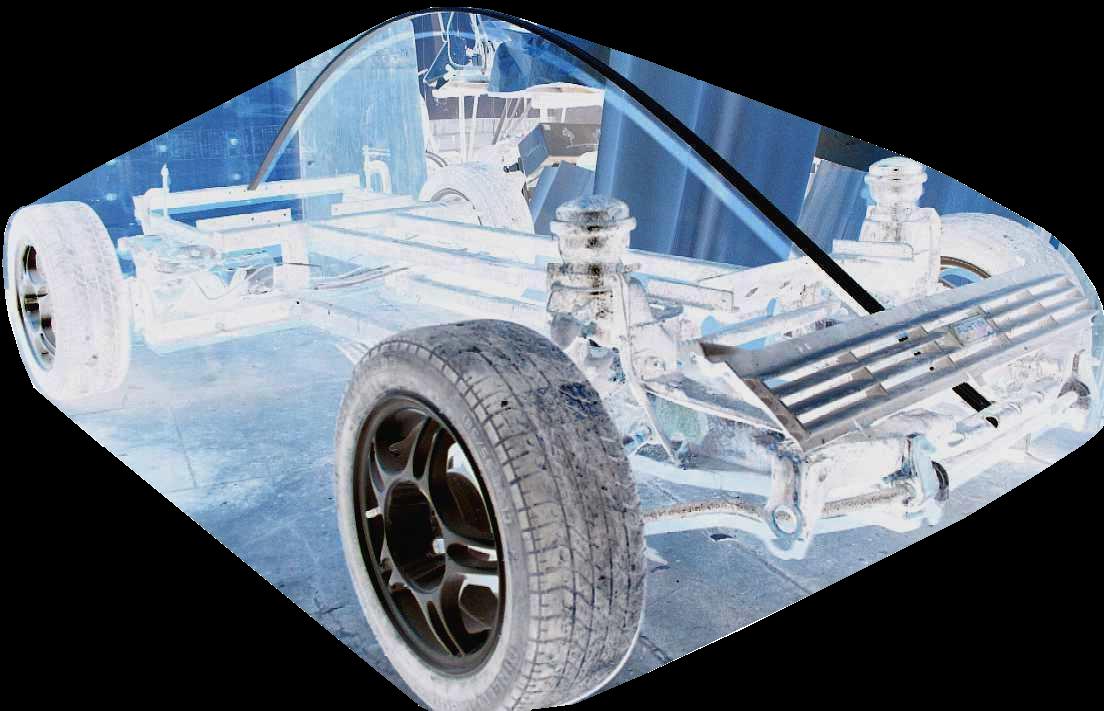
It's
about time we had an EV compatible with battery or hydrogen fuel cell
technology. The Tomcat DC50 by Bluebird Marine Systems Ltd may well be
the vehicle that changes all that for 2015.
|


















